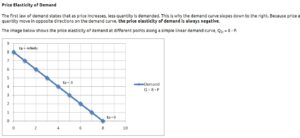On Tuesday, I did a post with regard to senior housing marketing. In the post, I referenced how important it is from a marketing perspective, to develop and communicate, a value proposition as part of a marketing strategy
This key theme that I refer to centers around the value proposition or in other words, the concept that pricing is both monetary and non-monetary and as such, the value proposition is about not only the price but also about the functional and psychological value of the service or product. In shorthand, the utility; how the product/service satisfies both functional and psychological needs at or for the given price. Knowing how complicated senior housing and all forms of long-term care (SNF, ALF, Senior Housing, etc.) are today to market, understanding the core concepts of pricing, economic value analysis, and value proposition can make a real difference in establishing an effective sales and marketing program. More here: https://rhislop3.com/2010/10/27/economic-value-analysis-value-propositions-and-marketing/
Senior living penetration has consistently hovered around 11% to 12%. While demand overall is strong, the demand for non-healthcare specific services is highly price elastic. Simply put, the pricier the product, the fewer the buyers.
Logically, this makes total sense as the highest demand for senior housing continues to be affordable housing and market rate or lower, housing. As the price points climb above market rates, the number of possible seniors to fill such units decreases. This isn’t to say however, that the market dips to no buyers as with all products or services that are highly elastic, buyers exist at all price points – luxury buyers and bargain buyers. But notice, there are more Walmart locations than there are Whole Foods stores. Price Elasticity of Demand: Meaning, Types, and Factors That Impact It (investopedia.com)

The more discretionary a purchase is, the more its quantity of demand will fall in response to price increases. That is, the product demand has greater elasticity. When a product’s price change significantly affects its supply or demand, the product is deemed elastic. This typically indicates the presence of suitable alternatives to the product. Common examples include cookies, SUVs, and coffee. Senior housing, particularly independent living has many alternatives.
As an example, suppose you’re thinking about purchasing a new refrigerator, but your existing one is still operational; it’s simply old and not as efficient. Should the cost of a new refrigerator increase, you might decide to delay the purchase until the prices decrease or the old one fails.
The less discretionary a product, the smaller the decrease in its quantity demanded when prices rise. Examples of inelastic products include:
- Gasoline or heating oil
- Habit-forming products like cigarettes
- Essential complementary goods, such as a specific printer ink for a specific brand of printer
A common characteristic of these products is their lack of viable alternatives.
General economic and social conditions can accentuate the demand and supply elements of products and services, masking or highlighting elasticity. COVID changed senior housing demand “negatively” for a couple of years. Currently, the cost of new housing development as a result of inflationary increases in building materials and labor and the cost of capital (borrowed) via interest rate increases has altered the supply of new units. The lack of new supply has helped artificially, boosted demand on the surface.
Marketing experts frequently strive to generate inelastic demand for their products. They accomplish this by distinguishing their offerings with significant differences from any available alternatives. This is the point of a value proposition within a marketing strategy.
- Driving the point of economic utility (measure of value and usefulness) to the price. In other words, why the $$ paid for a unit at a particular location or community, is an equal or better spend than other alternatives (competitors or remaining at home).
- How over time will the $$ spend accentuate a return on the investment in such a way as to improve quality of life. This is a key for CCRCs that have health services across a wide continuum where some preferential cost difference may apply and/or, access to these services is quick, seamless, and of high quality (quality is imperative).
Communicating the value proposition in a strategy that converts prospects (qualified) to sales is an ongoing, multi-faceted and multi-modal program. Today, the availability of multiple forms and avenues via social media and events offer providers opportunities galore to hone a message, deliver the message, and create product differentiation across a wide spectrum. Getting to the right audience and properly positioned, is key. 2024-shn-conversionlogix-ebook-vf-10-07-24.original
- Influencers like family.
- Referral sources like discharge planners and social agencies, including churches.
- The potential customer. Singles are different than couples.